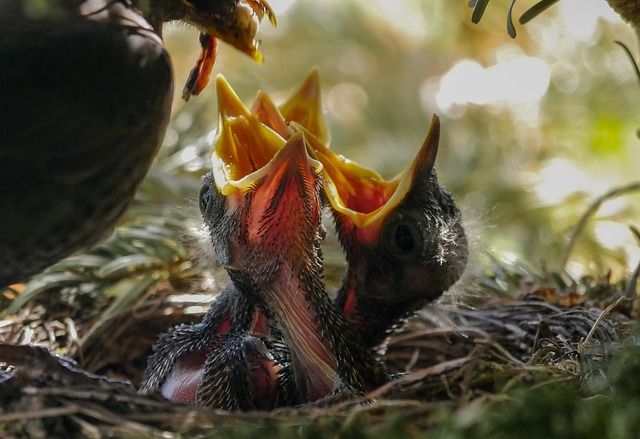A supernormal stimulus or superstimulus is an exaggerated version of a stimulus to which there is an existing response tendency, or any stimulus that elicits a response more strongly than the stimulus for which it evolved.
For example, when it comes to eggs, a bird can be made to prefer the artificial versions to their own,[1] and humans can be similarly exploited by junk food.[2] The idea is that the elicited behaviours evolved for the “normal” stimuli of the ancestor’s natural environment, but the behaviours are now hijacked by the supernormal stimulus.
British academic Nigel Spivey demonstrates the effect in the first episode of the 2005 BBC documentary series How Art Made the World to illustrate neuroscientist Vilayanur S. Ramachandran‘s speculation that this might be the reason for the grossly exaggerated body image demonstrated in works of art from the Venus of Willendorf right up to the present day.
In biology
In the 1950s, Konrad Lorenz observed that birds would select brooding eggs that resembled those of their own species but which were larger, and Niko Tinbergen, following his extensive analysis of the stimulus features that elicited food-begging in the chick of the herring gull, constructed an artificial stimulus consisting of a red knitting needle with three white bands painted around it; this elicited a stronger response than an accurate three-dimensional model of the parent’s head (white) and bill (yellow with a red spot).[3]
Tinbergen and his students studied other variations of this effect. He experimented with dummy plaster eggs of various sizes and markings finding that most birds preferred ones with more exaggerated markings than their own, more saturated versions of their color, and a larger size than their own. Small songbirds which laid light blue grey-dappled eggs preferred to sit on a bright blue black polka-dotted dummy so large they slid off repeatedly. Territorial male stickleback fish would attack wooden floats with red undersides—attacking them more vigorously than invading male sticklebacks if the underside were redder.[1]
Lorenz and Tinbergen accounted for the supernormal stimulus effect in terms of the concept of the innate releasing mechanism; however this concept is no longer widely used.[citation needed] The core observation that simple features of stimuli may be sufficient to trigger a complex response remains valid, however.
In 1979, the term supernormal stimulus was used by Richard Dawkins and John Krebs to refer to the exaggeration of pre-existing signs induced by social parasites, noting the manipulation of baby birds (hosts) from these, to illustrate the effectiveness of those signals.[4]
In 1983, entomologists Darryl Gwynne and David Rentz reported on the beetle Julodimorpha bakewelli attempting to copulate with discarded brown stubbies (a type of beer bottles) studded with tubercules (flattened glass beads).[5] This work won them the 2011 Ig Nobel Prize in biology.[6]
Another example of this is the study made by Mauck and colleagues, where they evaluated the effects of a plant pathogen named cucumber mosaic virus or CMV. This study showed that the aphids preferred the healthy plants but are still attracted by the infected plants, because of the manipulation of volatile compounds used by plants to attract them.[7]
Manipulation by parasites
In 2001, Holen et al., analyzed the evolutionary stability of hosts manipulation through exaggerated signals. Their model indicated that intensity of parasitic signals must be below a threshold to ensure acceptance from host. This threshold depends directly on the range of parasitism.[8]
For them, the only evolutionary stable strategy is when the host accepts all signs of the parasite with optimal intensity, which must be below the threshold; if this is not the case, the host can use these signals to identify the parasite.[8]
In psychology
Harvard psychologist Deirdre Barrett argues that supernormal stimulation govern the behavior of humans as powerfully as that of other animals. In her 2010 book, Supernormal Stimuli: How Primal Urges Overran Their Evolutionary Purpose,[9] she examines the impact of supernormal stimuli on the diversion of impulses for nurturing, sexuality, romance, territoriality, defense, and the entertainment industry’s hijacking of our social instincts. In the earlier book, Waistland,[2] she explains junk food as an exaggerated stimulus to cravings for salt, sugar, and fats and television as an exaggeration of social cues of laughter, smiling faces and attention-grabbing action. Modern artifacts may activate instinctive responses which evolved prior to the modern world, where breast development was a sign of health and fertility in a prospective mate, and fat was a rare and vital nutrient.
In a cross-cultural study, Doyle and Pazhoohi showed that surgically augmented breasts are supernormal stimuli, and they are more attractive than natural breasts, regardless of their size.[10] Also in a theoretical paper, Doyle proposed that how women walk creates supernormal stimuli through continuously alternating motion of the waist and hips causing peak shifts in perceptions of physical attractiveness involving women’s waist-to-hip ratio.[11]
In art
Costa and Corazza (2006),[12] examining 776 artistic portraits covering the whole history of art, showed that eye roundness, lip roundness, eye height, eye width, and lip height were significantly enhanced in artistic portraits compared to photographic ones matched for sex and age. In a second study, forty-two art academy students were requested to draw two self-portraits, one with a mirror and one without (from memory). Eye and lip size and roundness were greater in artistic self-portraits. These results show that the exaggeration and “supernormalization” of key features linked to attractiveness, such as eye and lip size, are frequently found in art.
See also
- Hyperreality, a similar concept in semiotics
- Peak shift principle
en.wikipedia.org/wiki/Supernormal_stimulus

Further References
Plain numerical DOI: 10.1038/ijo.2014.109
DOI URL
directSciHub download



![Habituation & moral apathy ea32b00b28f5043ecd0b4401ef444f94eb6ae3d01cb5134890f6c870_640[1]](https://cognitive-liberty.online/wp-content/uploads/ea32b00b28f5043ecd0b4401ef444f94eb6ae3d01cb5134890f6c870_6401-300x170.jpg)

![Self-control eb30b90828f2073ecd0b4401ef444f94eb6ae3d01db3164093f4c070_640[1]](https://cognitive-liberty.online/wp-content/uploads/eb30b90828f2073ecd0b4401ef444f94eb6ae3d01db3164093f4c070_6401-300x188.jpg)
![Ebbinghaus illusion 240px-Mond-vergleich.svg[1]](https://cognitive-liberty.online/wp-content/uploads/240px-Mond-vergleich.svg1_.png)

![The 'Weapons Priming Effect' and aggressive behaviour boy-958478_960_720[1]](https://cognitive-liberty.online/wp-content/uploads/boy-958478_960_7201.jpg)
![Invisible facts and perceptual illusions - David Copperfield vanishing the Statue of Liberty e837b00f28f4003ecd0b4401ef444f94eb6ae3d01db316419df5c37e_640[1]](https://cognitive-liberty.online/wp-content/uploads/e837b00f28f4003ecd0b4401ef444f94eb6ae3d01db316419df5c37e_6401-300x200.jpg)
![Inattentional blindness e032b00e2af61c3e815b410cee45449efe76e7d11bb6134990f8c2_640[1]](https://cognitive-liberty.online/wp-content/uploads/e032b00e2af61c3e815b410cee45449efe76e7d11bb6134990f8c2_6401-300x199.jpg)
![amygdala-fear.ml little-boy-1635065_960_720[1]](https://cognitive-liberty.online/wp-content/uploads/little-boy-1635065_960_7201.jpg)
